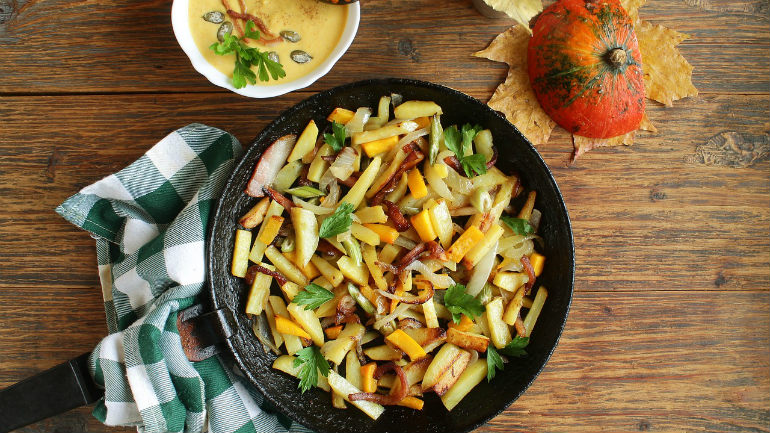 Reading Time: 6 minutes
Reading Time: 6 minutesWhen the weather turns cold and winter buries us under snow and ice, it can be hard to get excited about seasonal vegetables. We all know what to do with tomatoes and greens and all the amazing fruit available in spring, summer, and autumn, but what do you do with those roots and other weird-looking things that show up at the store during winter? I mean, carrots, okay, but a rutabaga? Really?
But, in truth, this time of year is your chance to dive into the wonderful world of winter vegetables (and, really, you’re trapped inside — what else have you got going on?).
Before I go further, I know what you’re thinking, “Why do I need to eat winter vegetables at all?” One word: quality. A lot of your traditional summer-green leafies are grown thousands of opposite-hemisphere miles away and are shipped under-ripe for several days before they get to your grocer. This robs them of some of their nutritional value and overall goodness (and, therefore, robs you of those things, as well).
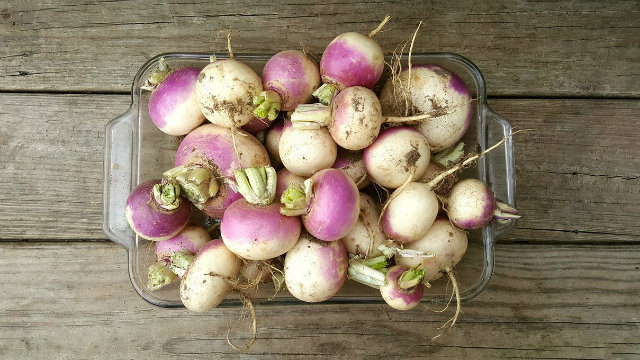
You also run the risk of becoming a “dull eater” if you eat the same stuff day after week after month. Admit it, you get in a vegetable “groove” that’s actually a rut. This is boring and not just in a meal-enjoyment way. When it comes to our nutrition, we are best off with a shotgun approach to food selection. It’s how our body gets the broad (and essential) range of vitamins, minerals, and micronutrients we need to thrive.
So let’s take a deep dive into that pile of winter vegetables, and I’ll share some of my favorite super-simple recipes with you, as well.
The Amazing Nutrition Found in Winter Vegetables
Since I brought it up, let’s talk about nutritional value. Root and other winter veggies are high in vitamins A and C for healthy eyes and ears, a good bit of potassium, and the antioxidants lutein and zeaxanthin. Both those last two are alkalizing and anti-inflammatory. A little beta carotene also helps reverse free radical damage, which can lead to age-related eye disorders, sun spots or wrinkles, UV damage, and potentially skin cancer. In fact, a diet high in vitamin A and vitamin C can act like a natural treatment for macular degeneration, cataracts, glaucoma, and skin cancer.
Those of you who are throwback/paleo/hunter-gatherer/caveman eaters also might consider adding winter vegetables because doing so would be pretty darn authentic. Though our ancestors would decamp and migrate occasionally, they still ate whatever was available. Nobody turned up their nose at a tuber when the venison was depleted and they were hungry.
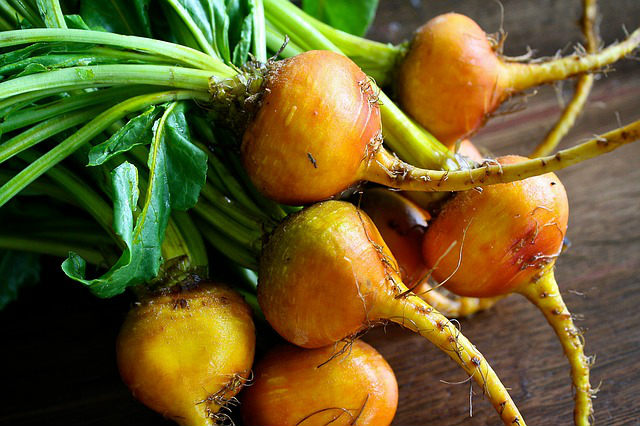
I know, I know, “But what about the carbs?” Aren’t parsnips and sweet potatoes chock full of “deadly” carbohydrates? Won’t my abs disappear and my bodyweight movements dissolve into nothingness?
Take a deep breath. Relax. Even salads have carbs (yes, carbs aren’t just a starchy thing) and they won’t kill you. Here are the numbers for one serving of a few different vegetables to give you a better picture:
- 3 oz of kale mix = 20gm
- 4 oz parsnips = 20g
- 6 oz Brussels sprouts = 20g
- 5 oz sweet potato = 20g
So, stop worrying so much. The goal, if you’re into all that counting, is to keep your carbs at a practical level. This should be based on activity level, goals, current and desired body composition and your overall health — but not fear.
How to Get Started Eating Winter Vegetables
Winter vegetables may seem dull and flavorless, but there are two things to consider:
- If you’ve never tasted the bite of turnips or the genuine sweetness of a sweet potato, then you’re missing out. Root veggies are packed with a tastiness you may not be aware of.
- If you don’t like the taste of these vegetables or find them boring, think of them the same way you do rice or pasta. I mean, admit it, noodles are nothing more than a sauce delivery vehicle and the most aromatic rice while pretty amazing is usually just a partner in the dish it’s part of.
Most importantly, mixing these gifts from the ground into your nutrition plan is a fantastic way to add flavor and variety to your otherwise bleak cold-weather diet. Give these goodies a try. Packed with food value, tasty and versatile they are winter workhorses for a healthier you.
Need a place to start? Try winging it with a simple soup or stew.
- Soften some diced carrots, parsnips, and rutabaga in a hot pan.
- Brown your protein of choice.
- Add broth, using more or less depending on if you want “soup” or “stew.”
- Add seasonings.
- Voila! A warm, hearty meal fit for royalty.
Expand from there and add tomato paste, change the spices, vary or mix the proteins, swap out some or all the veggies — the combination are endless.
Pro tip: Start with onions, celery, and carrots in your pan before adding the rest of your winter vegetables and you’re on your way to soup dominance.
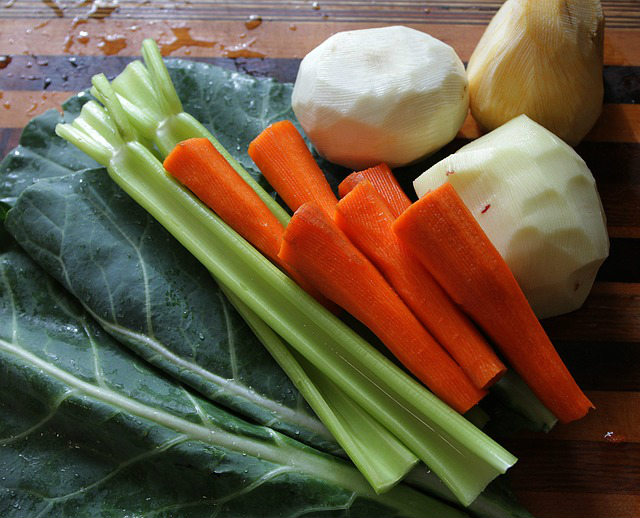
Salads and Side Dishes with Winter Vegetables
Remember, you’re not limited to eating these wonderful winter naturals cooked. Chop some daikon or radishes into a regular salad and kick your whole meal up a notch. For a little more kick, pickled versions of all these roots are typically available at the store (or can be made at home if you’re really bored this winter). Your imagination and ingenuity will be rewarded with flavor and nutrients.
That said, there’s never anything wrong with throwing your winter vegetables into a pan for a quick and healthy side dish. Here’s one of my go-to recipes.
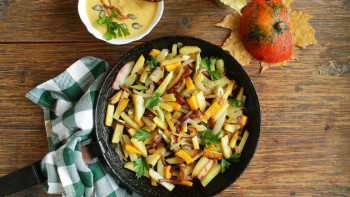
Root Vegetable Medley
Ingredients
- 1 1/2 pounds parsnips and rutabagas peeled and cut into half-inch cubes
- 1/2 pound red onion half-inch dice
- 8 ounces medium Brussels sprouts shredded on the thin slicing blade of a food processor or purchased pre-shredded
- 2 cloves garlic minced
- 1/4 cup apple cider vinegar
- 2 teaspoons fresh thyme leaves
- Kosher salt
- Freshly ground black pepper
Instructions
-
Heat a large skillet on medium heat and soften the onion in some oil.
-
Meanwhile microwave the parsnips and rutabagas in a zip-top bag for 3 minutes.
-
Add these to the pan and continue to cook until the roots are lightly browned, about 4 minutes.
-
Add the broccoli and garlic and cook for another 2 minutes or until the broccoli is bright green.
-
Put in a large bowl and toss with the vinegar, thyme, salt and pepper.
-
Serve hot as a side or cold as a salad.
Recipe Notes
Any ratio of any roots will work for this recipe — any variety of potatoes, turnips, carrots, and beets are all game.
To make this recipe happen even faster, you can microwave the broccoli, too. About a minute should do it.







